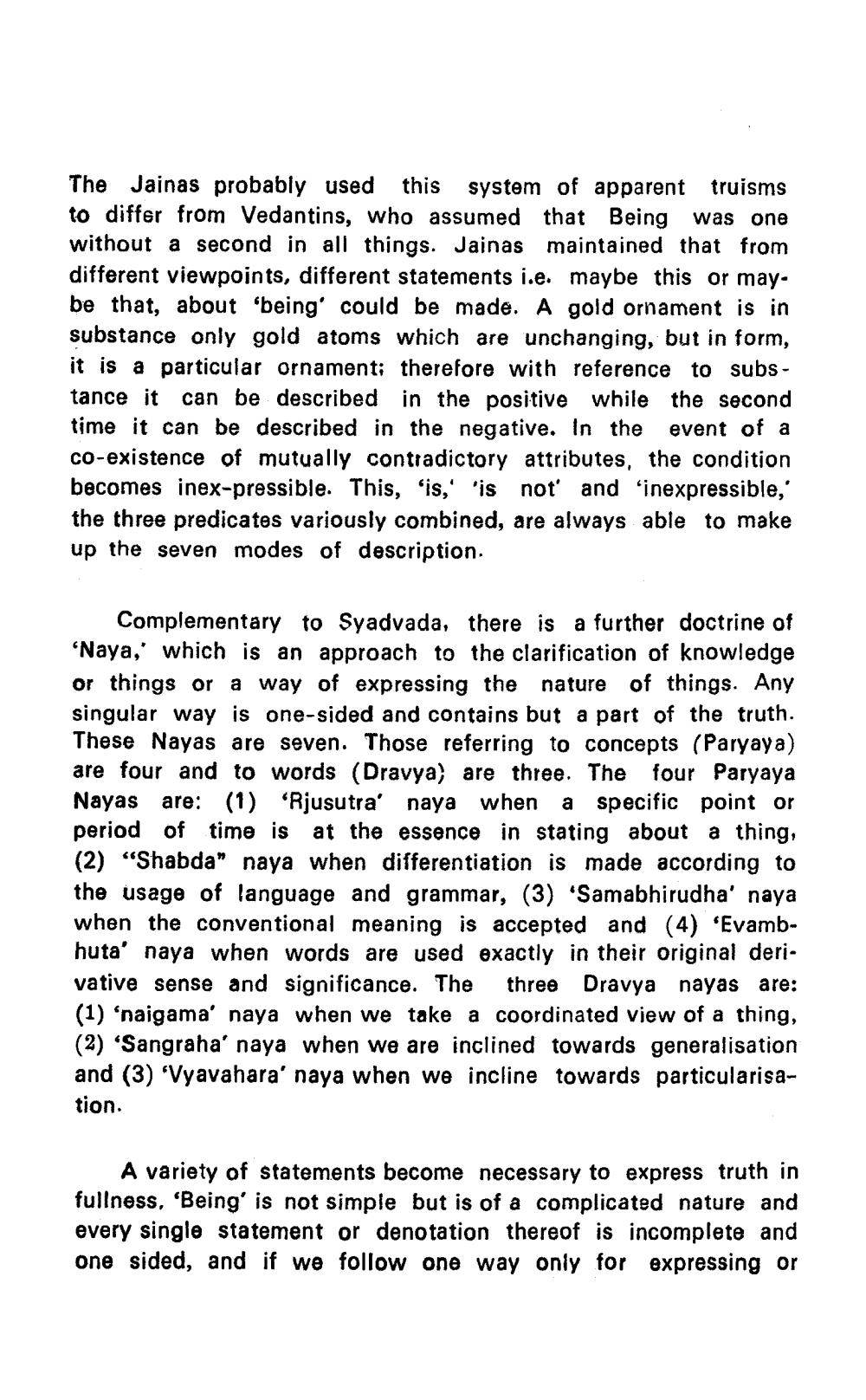________________
The Jainas probably used this system of apparent truisms to differ from Vedantins, who assumed that Being was one without a second in all things. Jainas maintained that from different viewpoints, different statements i.e. maybe this or maybe that, about being' could be made. A gold ornament is in substance only gold atoms which are unchanging, but in form, it is a particular ornamenti therefore with reference to subs - tance it can be described in the positive while the second time it can be described in the negative. In the event of a co-existence of mutually contradictory attributes, the condition becomes inex-pressible. This, 'is, 'is not' and 'inexpressible,' the three predicates variously combined, are always able to make up the seven modes of description.
Complementary to Syadvada, there is a further doctrine of 'Naya,' which is an approach to the clarification of knowledge or things or a way of expressing the nature of things. Any singular way is one-sided and contains but a part of the truth. These Nayas are seven. Those referring to concepts (Paryaya) are four and to words (Dravya) are three. The four Paryaya Nayas are: (1) 'Rjusutra' naya when a specific point or period of time is at the essence in stating about a thing, (2) “Shabda" naya when differentiation is made according to the usage of language and grammar, (3) 'Samabhirudha' naya when the conventional meaning is accepted and (4) 'Evambhuta' naya when words are used exactly in their original derivative sense and significance. The three Dravya nayas are: (1) 'naigama' naya when we take a coordinated view of a thing, (2) 'Sangraha' naya when we are inclined towards generalisation and (3) 'Vyavahara' naya when we incline towards particularisation.
A variety of statements become necessary to express truth in fullness, 'Being' is not simple but is of a complicated nature and every single statement or denotation thereof is incomplete and one sided, and if we follow one way only for expressing or




